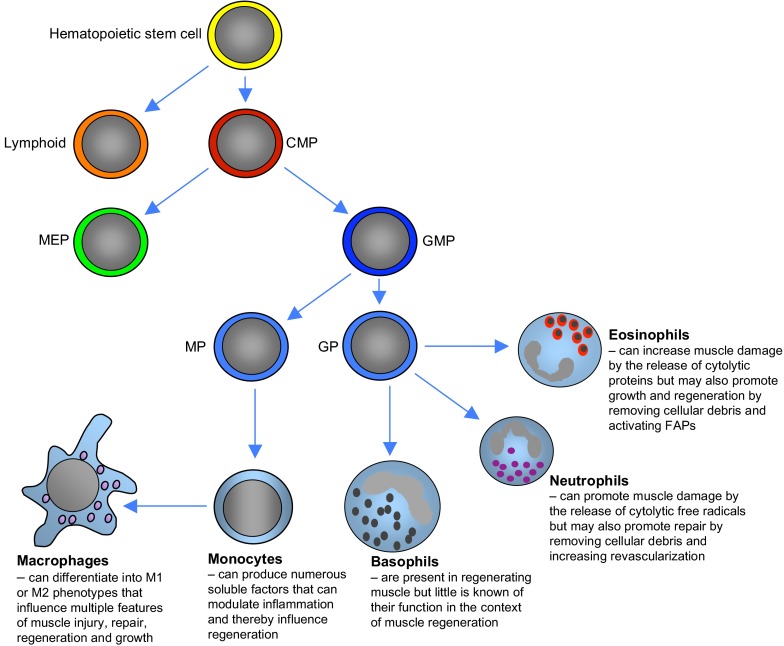Fig. 2.
Lineage of myeloid cells that can influence muscle regeneration. Common myeloid progenitors (CMPs) differentiate from multipotent hematopoietic stem cells to give rise to the numerous lines of myeloid cells. CMPs first differentiate into megakaryocyte and erythroid progenitor cells (MEPs) or granulocyte and macrophage progenitor cells (GMPs), with the latter lineage giving rise to the myeloid cell populations that have been most clearly associated with muscle regeneration. GMPs in circulating populations differentiate into either monocyte precursors (MPs) or granulocyte precursors (GPs), which can then undergo terminal differentiation into committed populations that can influence muscle injury, growth or regeneration. MPs give rise to monocytes that release a vast number of soluble factors that modulate the inflammatory response. Monocytes undergo further differentiation to become macrophages, the best characterized population of myeloid cells that influence muscle regeneration. GPs give rise to other populations of myeloid cells that can also influence regeneration. Eosinophils that derive from GPs can either promote muscle damage or muscle regeneration, which varies according to the injury or disease that initiates the inflammatory response. Neutrophils also play a dual role and have the capacity to either amplify muscle damage or promote repair by contributing to the removal of damaged tissue and increasing revascularization. Basophils, which are also derived from GPs, are present in regenerating muscle, although it is not clear whether they have a specific role in muscle regeneration. FAPs, fibro/adipogenic progenitors.

